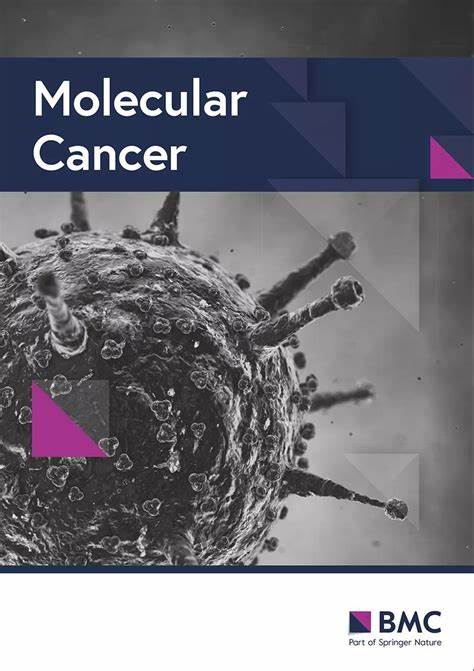Ex vivo modelling of human colorectal cancer liver metastasis by normothermic machine perfusion.
IF 33.9
1区 医学
Q1 BIOCHEMISTRY & MOLECULAR BIOLOGY
引用次数: 0
Abstract
BACKGROUND Colorectal cancer liver metastasis (CRLM) is associated with poor survival, primarily due to acquired therapy resistance. While novel therapies arise, translation is limited by the lack of tumor models accurately representing dynamic microenvironmental interplay. Here, we show that ex vivo normothermic machine perfusion (NMP) offers a novel preclinical framework to study the intratumoral dynamics of CRLM biology. METHODS Six resected metastatic human livers were preserved for two days and subjected to multi-omic profiling of serially sampled adjacent liver and metastatic tissue using single-cell RNA sequencing (scRNA-seq) and spatial transcriptomics (ST). Tissue integrity was assessed and cross-validated by immunofluorescence (IF), high-resolution respirometry (HRR) and flow-cytometry. RESULTS NMP was successfuly applied to metastatic livers with minimal surgical adaptations, preserving both intrinsic hepatic properties and tissue viability over an extended duration. Single-cell and spatial mapping confirmed preservation of CRLM phenotypic properties and demonstrated high clinical translatability by applicability of the intrinsic epithelial consensus molecular subtypes to metastasis. Spatially deconvoluted pathway activities reflected functional tissue-microenvironments. Transcriptomic profiles - including those of tumor-associated myeloid cells - were preserved during NMP. Finally, we demonstrate tumor-associated myeloid cell persistence as a driver of disease progression and poor survival in colorectal cancer. CONCLUSION Our findings represent the basis for future innovative applications adopting NMP in the context of CRLM, providing a new preclinical tumor model avenue.常温机器灌注造人大肠癌肝转移的体外模型。
结直肠癌肝转移(CRLM)与低生存率相关,主要是由于获得性治疗抵抗。虽然出现了新的治疗方法,但由于缺乏准确代表动态微环境相互作用的肿瘤模型,翻译受到限制。在这里,我们表明体外恒温机器灌注(NMP)为研究CRLM生物学的肿瘤内动力学提供了一个新的临床前框架。方法将6个切除的转移性人肝脏保存2天,并使用单细胞RNA测序(scRNA-seq)和空间转录组学(ST)对连续取样的邻近肝脏和转移组织进行多组学分析。通过免疫荧光(IF)、高分辨率呼吸仪(HRR)和流式细胞术评估和交叉验证组织完整性。结果snmp成功应用于转移性肝脏,手术适应性最小,在较长时间内保持肝脏固有特性和组织活力。单细胞和空间定位证实了CRLM表型特性的保存,并通过固有上皮一致分子亚型对转移的适用性证明了高临床可翻译性。空间解卷积通路活动反映了功能性组织微环境。转录组谱-包括肿瘤相关的髓样细胞-在NMP期间被保留。最后,我们证明了肿瘤相关的骨髓细胞持久性是结直肠癌疾病进展和低生存率的驱动因素。结论本研究结果为未来在CRLM中采用NMP的创新应用奠定了基础,为临床前肿瘤模型的建立提供了新的途径。
本文章由计算机程序翻译,如有差异,请以英文原文为准。
求助全文
约1分钟内获得全文
求助全文
来源期刊

Molecular Cancer
医学-生化与分子生物学
CiteScore
54.90
自引率
2.70%
发文量
224
审稿时长
2 months
期刊介绍:
Molecular Cancer is a platform that encourages the exchange of ideas and discoveries in the field of cancer research, particularly focusing on the molecular aspects. Our goal is to facilitate discussions and provide insights into various areas of cancer and related biomedical science. We welcome articles from basic, translational, and clinical research that contribute to the advancement of understanding, prevention, diagnosis, and treatment of cancer.
The scope of topics covered in Molecular Cancer is diverse and inclusive. These include, but are not limited to, cell and tumor biology, angiogenesis, utilizing animal models, understanding metastasis, exploring cancer antigens and the immune response, investigating cellular signaling and molecular biology, examining epidemiology, genetic and molecular profiling of cancer, identifying molecular targets, studying cancer stem cells, exploring DNA damage and repair mechanisms, analyzing cell cycle regulation, investigating apoptosis, exploring molecular virology, and evaluating vaccine and antibody-based cancer therapies.
Molecular Cancer serves as an important platform for sharing exciting discoveries in cancer-related research. It offers an unparalleled opportunity to communicate information to both specialists and the general public. The online presence of Molecular Cancer enables immediate publication of accepted articles and facilitates the presentation of large datasets and supplementary information. This ensures that new research is efficiently and rapidly disseminated to the scientific community.
 求助内容:
求助内容: 应助结果提醒方式:
应助结果提醒方式:


